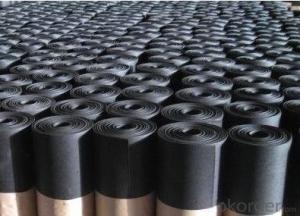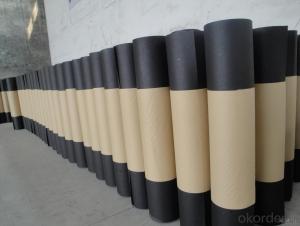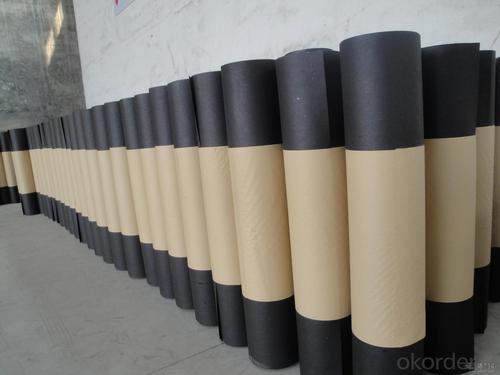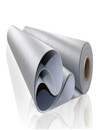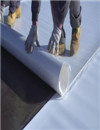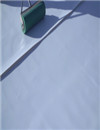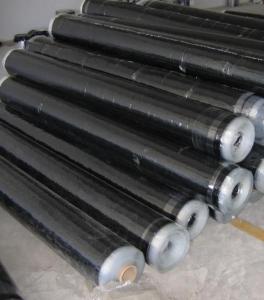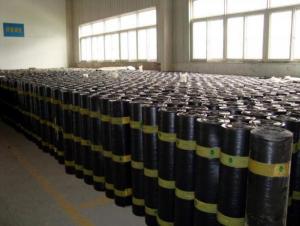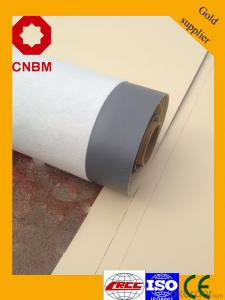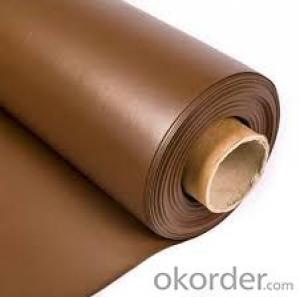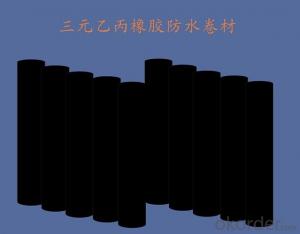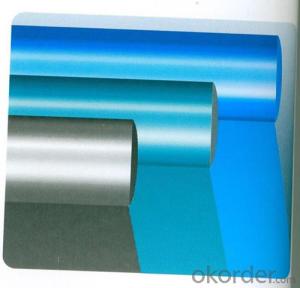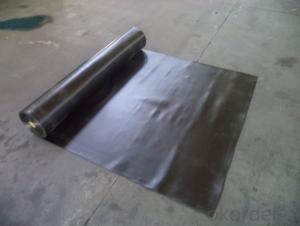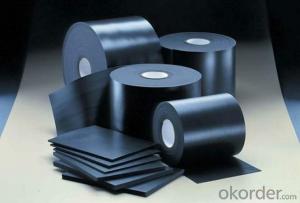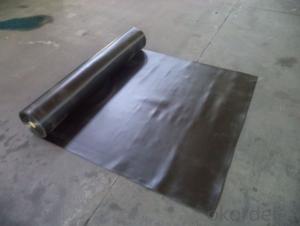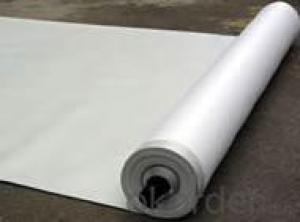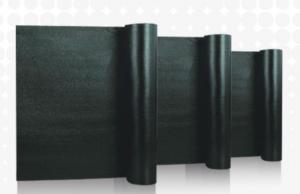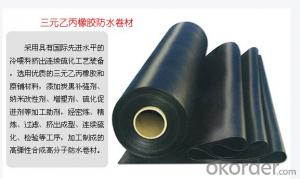EPDM Rubber Sheet for Waterproofing with 1.5mm Thickness
- Loading Port:
- Qingdao
- Payment Terms:
- TT OR LC
- Min Order Qty:
- 20000 m²
- Supply Capability:
- 600000 m²/month
OKorder Service Pledge
OKorder Financial Service
You Might Also Like
Specifications of EPDM Rubber Sheet with 1.5mm Thickness:
CE certification,in accordance with EN 13501-5:2005
homogenous epdm membrane.
ASTM standard D-7465,D-4637,
ISO9001 ISO14001
1.5mm epdm rubber roofing
EPDM waterproof membrane is of high elasticity among high polymer waterproof materials and becomes a world-popular waterproofing material. EPDM waterproof membrane is made from ternary ethylene-propylene rubber, which is designed for waterproofing of exposed and non-exposed applications. EPDM waterproof membrane production adopts the world-advanced equipment of cold feeding extrusion and continuous vulcanization technology.
Features of EPDM Rubber Sheet with 1.5mm Thickness:
Excellent weatherability, durability and size stability.
Good adaptability to high and low temperature, UV resistant and anti-corrosion.
High tensile strength and good elongation, accommodating substrate movement.
Easy installation, environment friendly.
Good rooting penetration resistance.
Service life up to 50 years.
Applications of EPDM Rubber Sheet with 1.5mm Thickness:
Subways, tunnels, roofs, basement.
Industrial and civil building waterproofing, like water reservior, bridge, dam, etc.
Geosynthetic liner for swimming pool, channels, irrigation system
Especially suitable for projects with high requirements in durability, anti-corrosion and deformation.
Technical Data of EPDM Rubber Sheet with 1.5mm Thickness:
Tensile Strength N/CM | Normal temperature: 60 ; 60°C: 30 |
Breaking Elongation % | Normal temperature: 400 ; -20°C: 10 |
Tear Resistance N | 20 |
Impermeability, 30 min no leakage | 0.3Mpa |
Low Temperature Bending °C | -20 |
Heating Shrinking mm | Extension: 2 Shrink: 4 |
Heat Resistance (80°C×168h) | Tensile Strength % : 80 ; Keeping rate of adhesive breaking:70 |
Alkali resistance (10% ca (oh)2 solution,normal temperature ×168h)) | Tensile Strength % : 80 ; Keeping rate of adhesive breaking:80 |
Synthetic aging | Tensile Strength % : 80 ; Keeping rate of adhesive breaking:80 |
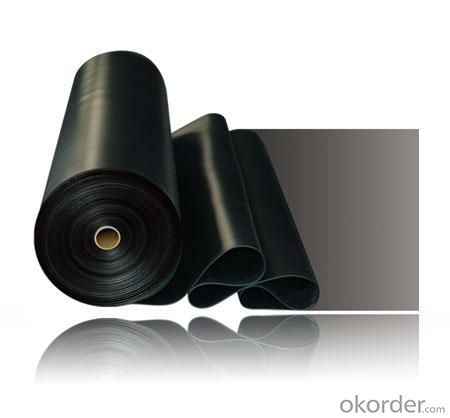

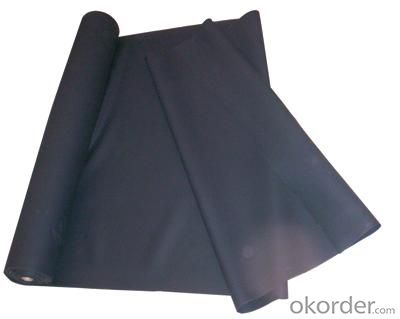
- Q: How does a waterproofing membrane handle exposure to UV rays and sunlight?
- A waterproofing membrane is designed to handle exposure to UV rays and sunlight by incorporating UV stabilizers and additives that protect it from the damaging effects of ultraviolet radiation. These components help to prevent degradation, discoloration, and weakening of the membrane caused by prolonged exposure to sunlight. Additionally, some membranes may have reflective properties that reduce heat absorption and extend their lifespan.
- Q: Can a waterproofing membrane be used for a rooftop garden?
- Indeed, a rooftop garden can benefit greatly from the utilization of a waterproofing membrane. Specifically designed to obstruct water infiltration, this product proves to be an optimal solution for safeguarding the building structure against water-induced harm. By implementing a waterproofing membrane on the rooftop, a protective shield is established, effectively warding off any potential seepage into the underlying layers. Consequently, the installation of this barrier guarantees the preservation of the building's integrity, shielding it from potential leaks and water damage. This measure holds particular significance in the context of rooftop gardens, given that the weight of the soil and vegetation heightens the risk of water infiltration. Thus, the utilization of a waterproofing membrane ensures the structural stability of the rooftop garden, effectively averting any water-related complications.
- Q: Does a waterproofing membrane prevent water infiltration through concrete?
- Yes, a waterproofing membrane is designed to prevent water infiltration through concrete. It acts as a barrier, preventing water from seeping through the concrete and causing damage.
- Q: Is a waterproofing membrane resistant to impact damage?
- The main purpose of a waterproofing membrane is not to withstand impact damage. Rather, it is primarily intended to safeguard the underlying structure from moisture damage and prevent water infiltration. Although certain membranes may possess a certain degree of impact resistance, it is not their principal attribute. In order to shield the membrane from impact damage, additional precautions such as incorporating protective layers or utilizing materials that are resistant to impact may be required.
- Q: Can a waterproofing membrane be used for underground bunkers?
- Underground bunkers can utilize waterproofing membranes to great effect. Designed to establish a formidable defense against moisture, these membranes effectively thwart water infiltration into structures. This renders them an optimal solution for underground bunkers, which are susceptible to water encroachment due to their subterranean nature. By affixing a waterproofing membrane to the walls and floor of the bunker, it becomes possible to avert water seepage and maintain a dry interior. This is of paramount importance for safeguarding any stored items or occupants within the bunker. Moreover, waterproofing membranes offer additional advantages, such as insulation and protection against radon gas. It is crucial to select a membrane explicitly crafted for underground applications and capable of withstanding the unique conditions and pressures associated with subterranean environments.
- Q: Can a waterproofing membrane be used on metal block surfaces?
- Yes, a waterproofing membrane can be used on metal block surfaces. Waterproofing membranes are designed to create a barrier against water and moisture, and they can be applied to a variety of surfaces, including metal. The membrane will adhere to the metal surface, creating a waterproof layer that helps prevent water infiltration and protect the metal from rusting or corrosion. However, it is important to ensure that the metal surface is clean, dry, and properly prepared before applying the waterproofing membrane to ensure proper adhesion and effectiveness. Additionally, it is recommended to consult with a professional or refer to the manufacturer's instructions for specific guidance on using a waterproofing membrane on metal block surfaces.
- Q: Can a waterproofing membrane be used for residential swimming pools?
- Indeed, residential swimming pools can benefit from the use of a waterproofing membrane. These membranes are frequently employed in construction to safeguard against water infiltration and can be utilized on diverse surfaces including concrete, tile, and metal. By forming a barrier, they effectively prevent water from permeating the pool structure, thereby preserving its integrity and averting leaks. Furthermore, waterproofing membranes afford protection against other types of harm such as corrosion and deterioration resulting from chemicals or adverse weather conditions. Consequently, it is crucial to choose a top-notch waterproofing membrane specifically designed for swimming pool applications in order to guarantee long-lasting safeguarding and durability.
- Q: Can a waterproofing membrane be used to repair existing water leaks or damage?
- Yes, a waterproofing membrane can be used to repair existing water leaks or damage. It acts as a barrier to prevent water from penetrating through surfaces, effectively sealing off any existing leaks or damage and preventing further water intrusion.
- Q: Can a waterproofing membrane be applied to curved or irregular surfaces?
- Yes, a waterproofing membrane can be applied to curved or irregular surfaces. There are flexible waterproofing membranes available in the market that can conform to various shapes and contours. These membranes are designed to be stretchable and can be manipulated to fit curved or irregular surfaces without compromising their waterproofing capabilities. It is important to choose a membrane that is specifically designed for such applications and ensure proper installation techniques are followed to ensure a watertight seal.
- Q: Does a waterproofing membrane require any specific curing time before it can be exposed to water?
- Yes, a waterproofing membrane typically requires a specific curing time before it can be exposed to water. The curing time allows the membrane to fully bond and form a protective barrier against water penetration. This time frame can vary depending on the type of membrane and manufacturer's instructions. It is crucial to adhere to the recommended curing time to ensure the membrane's effectiveness and durability. Premature exposure to water before the curing process is complete could compromise the membrane's performance and lead to water leakage or damage. Therefore, it is essential to follow the manufacturer's guidelines and allow the necessary curing time before subjecting the waterproofing membrane to water.
Send your message to us
EPDM Rubber Sheet for Waterproofing with 1.5mm Thickness
- Loading Port:
- Qingdao
- Payment Terms:
- TT OR LC
- Min Order Qty:
- 20000 m²
- Supply Capability:
- 600000 m²/month
OKorder Service Pledge
OKorder Financial Service
Similar products
Hot products
Hot Searches
Related keywords
